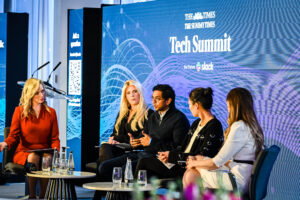In November 1951, Princeton met their bitter rivals, Dartmouth, in the final match of the college American Football season. It turned into a rough, dirty game – by the end of play, the Princeton quarterback had a busted nose and his Dartmouth counterpart, a broken leg.
The violence certainly made the game memorable. But it’s lasting impact came from a psychology study that it inspired - a study that still has relevance to brands today.
US psychologists Albert Hastorf and Hadley Cantril showed footage of the game to 324 fans from both sides. They then asked the students to count the number of fouls committed by each side and who had started the foul play.
The results were conclusive. Students were twice as likely to see the opposition commit a foul as they were to spot a foul by one of their own.
And just 36% of Dartmouth students thought Dartmouth had started the fight vs 86% of Princeton students. It’s clear that the match was viewed through a prism of their prior beliefs.
Bringing baggage
This is what psychologists called the confirmation bias. And it’s important for brands to take on board.
Because the evidence suggests that consumers don’t interpret messages neutrally.
- If a listener dislikes a brand, they will view the facts cynically.
- If they like the brand in question, they interpret the same data positively.
That’s an issue for any brand that’s trying to overturn brand misperceptions.
Distraction for cut-through
How can brands get around this? Well, thankfully, there are further psychology experiments that provide some handy tactics.
The most important dates back to 1964, when Stanford psychologists Leon Festinger and Nathan Maccoby ran a study with members of college fraternities.
They began by playing the listeners a persuasive statement about why fraternities were morally wrong. The recording was either played on its own or accompanied by an unrelated silent film.
After the students had heard the recording, the researchers questioned them as to how far their views had shifted. Did they still support fraternities?
Those who had heard the argument at the same time as watching the silent film were more likely to have changed their opinion.
The psychologists’ hypothesis was that the brain is adept at generating counterarguments that maintain its existing point of view. But when distracted, people are less able to construct this rebuttal.
You could apply this tactic by reaching your brand rejecters at moments of distraction.
But, if you follow this approach, you run the risk of the audience being so distracted that they don’t even notice your ad.
Catch their attention
An alternative approach comes from the work of Robert Heath. Drawing on Festinger’s work, Heath argues for the use of indirect communication.
In other words, get your message in through the back door.
The thinking behind this is that if your audience are not hearing a direct message, there’s nothing solid to build counterarguments against.
So, says Heath, communication should be less about what you say, and more about how you say – your brand’s body language.
There are some easy approaches that can be used in print. One oblique way of boosting status is to not directly claim your status - rather, make people laugh.
Delivery through media
There are plenty of opportunities in media selection, too.
- The benefits of large formats stretch beyond noticeability.
- Full pages in quality titles convey premium-ness to rejecters more convincingly than providing a litany of reasons to believe.
- Harnessing non-conventional formats imbues a brand with a sense of innovation more effectively than a full-frontal assault of data.
The key for any approach to win over rejecters is to focus on what a behaviour implies rather than what it directly claims.









